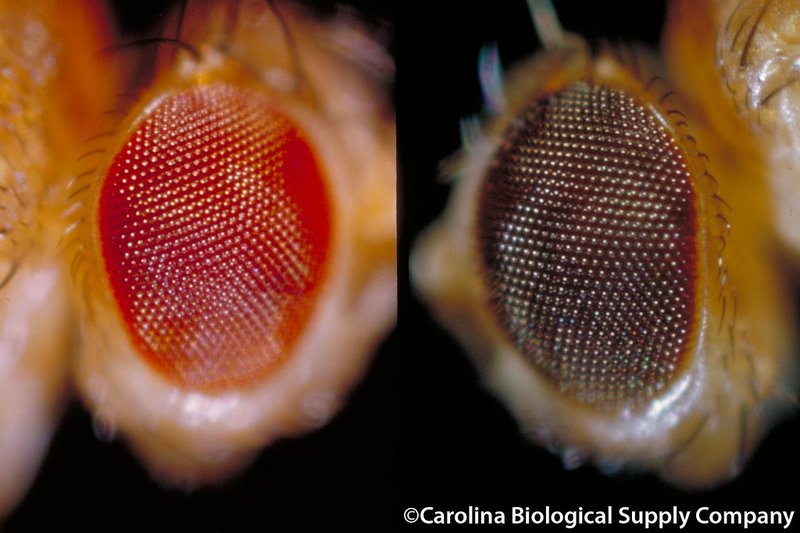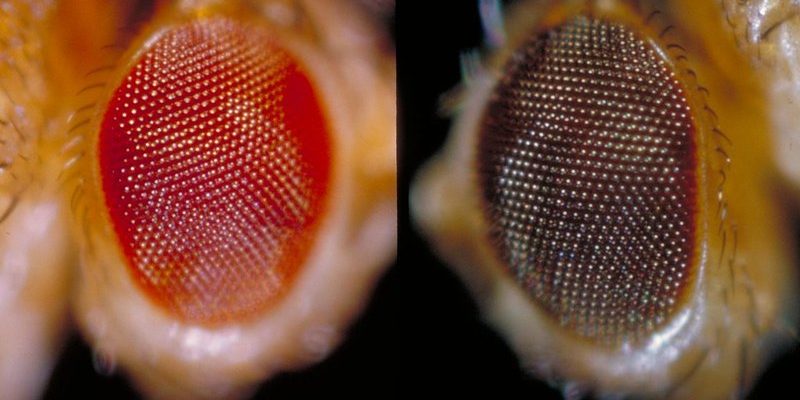
You might have seen them buzzing around your kitchen or resting on a ripe banana. Yes, we’re talking about Drosophila (Fruit Fly). These tiny insects are not just common nuisances; they play a fascinating role in the world of science and the environment. At first glance, they might seem like pests, but their very existence has contributed to groundbreaking discoveries in genetics and biology. Let’s dive into the world of fruit flies and see what makes them so interesting!
When the weather warms up, fruit flies seem to appear out of nowhere, especially around fruits and vegetables. They have a knack for finding their way into our kitchens, but there’s so much more to them than being mere household intruders. Thanks to their short life cycle and unique genetics, they’ve become crucial in various research fields, including genetics, neurobiology, and even cancer research. So, what exactly are these flies all about? Let’s explore their biology, behavior, and importance in the scientific community.
What is Drosophila (Fruit Fly)?
The term Drosophila refers to a genus of small flies, commonly known as fruit flies. They belong to the family Drosophilidae and are typically around 3 mm in length. These flies are characterized by their red eyes and yellowish-brown bodies. They have a very short life span of about 30 days, which is why they reproduce rapidly, laying hundreds of eggs at a time on rotting fruits or fermented liquids.
One of the most studied species within the Drosophila genus is Drosophila melanogaster. This is the fruit fly you often see in laboratory settings. Their robust genetic makeup allows scientists to conduct experiments that help us understand fundamental biological processes, like heredity and gene function. In essence, they serve as tiny models for human genetics, which is why they have become a staple in biological research.
But why fruit flies? What makes them so suitable for research? Their quick development, easy care, and manageable size make them ideal laboratory subjects. Not to mention, their genetic similarities to humans mean that studies on these flies can often provide insights into human physiology and diseases.
Basic Facts about Drosophila (Fruit Fly)
| Scientific Name: | Drosophila melanogaster |
| Size: | Approximately 3 mm |
| Habitat: | Fruits, vegetables, and fermented organic matter |
| Diet: | Yeast, decaying fruits, and sugars |
| Speed: | Flies at around 1.5 mph |
| Lifespan: | 30 days |
| Reproduction: | Fast; can produce hundreds of offspring in a short time |
Life Cycle of Drosophila (Fruit Fly)
The life cycle of the fruit fly is a remarkable journey that unfolds in just a few weeks. It begins when the female lays her eggs on the surface of decaying fruit. This choice is crucial because the larvae, once hatched, need nourishment. Within just 24 hours, the eggs hatch into tiny larvae, also called maggots.
These larvae are ravenous eaters! They feast on the yeast and sugars found in the rotting fruit. Over the next few days, the larvae grow rapidly, shedding their skin multiple times—a process called molting. After about four to five days, they enter the pupal stage, where they begin their transformation into adult flies. It’s like nature’s own caterpillar-to-butterfly story, but in this case, it’s a maggot becoming a fly!
The pupal stage lasts for about a week, after which the adult fruit flies emerge. It’s fascinating to watch them transform from larvae to fully developed flies, ready to start the cycle once again. This rapid life cycle makes them perfect subjects for genetic studies, as researchers can observe several generations in a short period.
Behavior and Habitat
You’ve probably noticed fruit flies are often found buzzing around your kitchen, especially near overripe fruits. They thrive in warm, humid environments where they can easily find food. Their keen sense of smell helps them locate decaying fruits and vegetables from quite a distance. But that’s not all—fruit flies have impressive memory skills, allowing them to recognize good food sources and avoid harmful ones.
In the wild, they aren’t just limited to fruit; they can often be found in various habitats, including gardens and compost piles. They play an essential role in the ecosystem by helping to decompose organic matter. As they feed on decaying material, they also help in nutrient recycling, which benefits the soil and promotes plant growth.
Interestingly, fruit fly behavior varies depending on their environment. In a lab setting, they may show different mating and feeding habits compared to wild populations. In the wild, they often engage in complex courtship behaviors, where males will perform dances to attract females. These behaviors can be quite intricate, showcasing the adaptability and intelligence of these tiny creatures.
Importance of Drosophila (Fruit Fly) in Research
One of the primary reasons fruit flies are so heavily studied in laboratories is their genetic similarity to humans. Nearly 75% of human disease genes have a counterpart in fruit flies, making them invaluable in medical research. For decades, scientists have used fruit flies to study various aspects of genetics, including mutation, heredity, and developmental biology.
Research using Drosophila has led to significant discoveries. For example, scientists can manipulate their genes to observe changes in behavior and health. This method has provided vital insights into conditions like Alzheimer’s and Parkinson’s diseases. Moreover, studying how fruit flies respond to toxins helps researchers understand how environmental factors affect human health.
The beauty of using Drosophila in research lies in their simplicity. They have a relatively small genome, making genetic manipulation easier and quicker than it would be in larger organisms. This efficiency allows researchers to make rapid advancements in understanding basic biological processes and developing potential treatments for diseases.
Common Misconceptions about Drosophila (Fruit Fly)
When it comes to Drosophila, there are several common misconceptions that often arise. One of the biggest myths is that all fruit flies are the same. In reality, there are over 1,500 species of Drosophila, each with unique characteristics and behaviors. While the Drosophila melanogaster is the most well-known, other species play different roles in their ecosystems.
Another misconception is that fruit flies are only pests to humans. While they can be annoying when they invade our kitchens, they are essential for the ecosystem. They help in the decomposition of organic matter and are a vital food source for many predators, including birds and spiders. In a way, fruit flies are unsung heroes in maintaining the balance of our environment.
Finally, many people believe that fruit flies have a significantly shorter lifespan than they do. While they do live fast-paced lives, lasting around 30 days, this is relatively long for an insect of their size. This longevity allows them to reproduce multiple times, contributing further to their population in a short span.
FAQ
What do Drosophila (Fruit Fly) eat?
Drosophila primarily feeds on yeast, sugars, and decaying fruits. They are attracted to ripe and overripe fruits where they find their food source. This diet provides them with the necessary nutrients to grow and reproduce quickly. In laboratory settings, they are often fed a diet of mashed bananas or special fruit fly media that provides balanced nutrition.
How do you get rid of Drosophila in the house?
To get rid of Drosophila in your home, it’s essential to eliminate their food sources. Start by discarding overripe fruits and sealing any food containers. Keeping your kitchen clean and free of spills is also crucial. You can use homemade traps, like a bowl of cider vinegar covered with plastic wrap punctured with small holes, which attracts the flies and traps them inside.
Are Drosophila harmful to humans?
No, Drosophila are not harmful to humans. They do not bite or sting and are not known to carry diseases that affect people. However, they can contaminate food, which is why it’s important to keep your kitchen clean and free of rotting fruits.
What is the lifespan of a Drosophila?
The average lifespan of a Drosophila is about 30 days under optimal conditions. However, this can vary depending on environmental factors such as temperature and food availability. In lab settings, they might live a bit longer or shorter depending on the conditions they are kept in.
How fast can Drosophila (Fruit Fly) fly?
While they may seem like they’re just buzzing around aimlessly, Drosophila can fly at speeds of around 1.5 mph. This speed helps them navigate through their environment and evade potential predators while seeking food sources.
Can Drosophila be used in genetic research for humans?
Yes! Drosophila is widely used in genetic research due to its genetic similarities to humans. Researchers can manipulate fruit fly genes to understand better how certain diseases work and to identify potential treatments. This research has paved the way for significant discoveries in genetics and medicine.
Why do Drosophila have red eyes?
The iconic red eyes of Drosophila are due to the presence of a pigment called ommochrome. This trait is common in many fruit fly species and has been extensively studied. Interestingly, genetic mutations in the genes responsible for eye color can result in different eye colors, which researchers study to understand genetic expression and inheritance.
What habitats do Drosophila thrive in?
Drosophila is primarily found in areas with substantial decaying organic material, such as fruit trees, gardens, and compost piles. They thrive in warm, humid conditions that are conducive to the fermentation processes they rely on for food. Because of their adaptability, they can be found in various environments, from urban areas to wild forests.
Are Drosophila the same as house flies?
No, Drosophila are not the same as house flies. While both are small flying insects, they belong to different families. Drosophila are fruit flies that prefer rotting fruits, whereas house flies tend to thrive around garbage and decaying matter. They also differ in their appearance and behavior, making them distinct from one another.
What’s the significance of Drosophila in education?
Drosophila is significant in educational settings, particularly in biology classes. Their rapid life cycle, genetic traits, and ease of care make them perfect subjects for teaching concepts of genetics and evolution. Students can conduct experiments that demonstrate inheritance, mutation, and natural selection, making learning engaging and hands-on.
How do Drosophila contribute to ecological balance?
Drosophila plays a crucial role in maintaining ecological balance by contributing to the decomposition process. They help break down decaying organic matter, returning nutrients to the soil, which supports plant growth. Additionally, they serve as a food source for various predators, ensuring a healthy connection in the food web.
Can Drosophila survive in cold weather?
Drosophila generally prefer warm temperatures, so cold weather is not ideal for them. In cooler conditions, their activity decreases, and they may not reproduce as quickly. However, some species can enter a dormant state to survive through winter months. They tend to emerge again once the temperatures rise and favorable conditions return.

